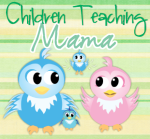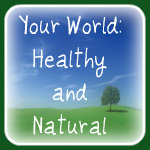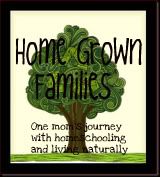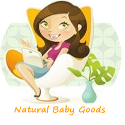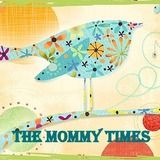Quickly before delving into Organic Food of pt 3 Green in the Kitchen series, I must share this good news. I bought myself a Moop! 'A Mop?' You ask. No, a Moop! Also known as, a bag I have admitedly been coveting for oh, a year and a half at least. It was an early Mother's Day present to myself(along with a handmade coin purse that is a.d.o.r.a.b.l.e.) And it might be used but hey, it's new to me and I'm so happy to finally enjoy one in real life. Oddly enough, another church mom has the same bag(different color!) Always a nice surprise to find another person that knows what Etsy is all about. moop.etsy.com
It's business time!
Organic Food
If you're new to organic food it may seem a little daunting at first. Higher prices being the major hurdle. The trick is knowing what is and isn't worth getting and knowing where to look. Many bigger retailers like Walmart and Target have started carrying their own organic store brand. These can save you some money over the more expensive name brand items. Farmers' Markets are another fantastic place to buy organic AND local. Nothing like cutting out the middle man and bring food home directly from the source! There are markets all over the place, most neighborhoods/suburbs have their own so you don't have to go downtown or to the boonies to find one. Also check around for natural food stores like Campbells. And of course being the internet age, there is a website that can help you wherever you are: http://www.localharvest.org/. They list Online Stores, Farms, CSAs, Farmers' Markets, Restaurants and Grocery/Coops. Pretty slick, check it out!
So just what is worth getting that is organic? Starting off, Meat and Dairy are two of the top recommended things to do if possible. Dairy includes milk, butter and yogurt. Meat includes eggs. The meat isn't at risk to high pesticide exposure but more so because it has the biggest environmental impact. This is because of the conventional methods used to raise animals, using hormones to speed growth, antibiotics to resist disease and pesticides and fertilizers to grow the grain needed to feed them. One story I think about often is what my husband saw while serving his mission in Brazil for two years. The girls there hit puberty much, much earlier than girls here due to the hormones added to their chicken. Even here my mother(who is a teacher), says it is occurring earlier than ever.
Dairy is mostly of note as it is a big part of kids' diets. Pesticides have been detected in human breast milk so of course it is going to be found in dairy products, as well. Most of the 'bad stuff' gets excreted in the fat that is used in milk, butter and yogurt. In recent studies it has also been found that organic milk/dairy products contain significantly more amounts of vitamins than conventional dairy products. They are now recommending pregnant/nursing women to drink organic milk as much as possible.
Now for the veggies and fruit. According to the Environmental Working Group (EWG), consumers can reduce pesticide exposure by 80% by avoiding the most contaminated fruits and vegetables. The easiest way to keep it all straight is to remember a few key things: produce with thin skin and stems creating an indentation in the top are most likely high in pesticide. This would include peaches, strawberries, apples, bell peppers, celery, pears, tomatoes, nectarines, grapes and cherries. The thin skin provides little barrier to the chemicals and the stem fruits have pooling of chemicals around the stems which allows for more absorption. Leafy greens (lettuce, spinach) and root crops such as carrots and potatoes are also recommended to buy organic.
I know, it's a lot. But never fear, because there is another rule of thumb if you don't have a money tree in your backyard. Buy organic what you eat a lot of. An apple every day? Get organic. Rarely get through a thing of yogurt before it expires? Don't buy organic. Simple.
I'll also list quickly things not to waste your money on buying organic: onion, avocado, sweet corn, pineapple, mango, asparagus, sweet peas, kiwis, cabbage, eggplant, papaya, watermelon, broccoli, sweet potatoes, tomatoes*. *debatable.
In general, being smart about what's worth buying organic and cutting processed foods as much as possible from your diet will equal a happy pocketbook and healthy body. Lastly, the cheapest way to get organic? Grow your own. And no excuses about a lack of yard or time- container gardening and square foot gardening are easy for even the level 0 and lazy gardeners. Check out my blog midwestbarefootgardener.blogspot.com in a couple weeks as I start to chronicle the joys and struggles of gardening in the Midwest!
Oh yes, and save those food scraps (minus meat and and dairy) for the compost pile!
Monday, April 27, 2009
Green in the Kitchen pt 3 Organic Food
- Share this on del.icio.us
- Digg this!
- Stumble upon something good? Share it on StumbleUpon
- Share this on Reddit
- Add this to Google Bookmarks
- Tweet This!
- Share this on Facebook
- Share this on Mixx
- Subscribe
- Buzz up!
- Share this on Linkedin
- Submit this to DesignFloat
- Share this on Technorati
- Submit this to Script & Style
- Post this to MySpace
- Share this on Blinklist
- Share this on FriendFeed
- Seed this on Newsvine
Widget by Css Reflex | TutZone
Monday, April 13, 2009
Green in the Kitchen pt 2 leftovers, composting and recycling
Happy belated Easter to all! We had a wonderful Easter/birthday weekend for our daughter full of family(and of course presents and candies). In keeping with our 'green' theme, I had a moment of brilliant thought and used a handmade dolly moses basket(from Anklebiters on Hyenacart.com) for my daughter's Easter basket. It was going to be a birthday present but we realized now is the time for a trike so that was her birthday present instead. She loves to carry it around with Becca in it and tuck her dolly in for a nap.
On to Kitchen Green!
Couple leftover things from the previous post that well, deal with leftovers. Ziplock bags and Saran wrap/foil. Sometimes, there's just no way around using them. So I'm all for it, just on a reduced and recycled basis.
For ziplock bags/thing needing saran wrap we try to use rubbermaid or tupperware type containers with lids instead. Everything from snacks to leftovers in the fridge to taking lunch to work. We have a handy rubbermaid set from Target that came with an organizer and 3 sizes of containers for 20$. It is used every single day. Two of the containers use the same size lids, even better. Another option is prex dishes. A lot of them come now with lids, too, which is pretty nifty. Ideally I'd like to use those more, but the rubbermaid is a bit easier to grab at the moment. When they are worn out, I'll probably use more pyrex and save plastic stuff for travel containers. If you need to use a ziplock bag, try to wash it out, dry and reuse it(do not reuse bags that have had meat in them).
A new product sold on the hyenacart.com site(I swear I don't get paid to plug them in!) are Foilers. Here's the scoop on this cool item from http://hyenacart.com/thefoilersshop/
'The Story of Foilers
One evening in 2004, after a day of diaper sewing, I needed to cover some leftovers in a 9 x 13 inch pan. I was out of plastic wrap. I didn't have enough tin foil. Then, I had a brainstorm. After a little measuring, cutting, and sewing, the first Foiler was born. It worked perfectly! So, in the days soon after, I worked to develop more sizes. I tested these on my friends and family and everyone loved their Foilers.
What Foilers Are
Foilers are an earth friendly innovation--an alternative to using plastic wrap or foil when storing food. They are made of a layer of waterproof PUL fabric, a layer of woven cotton print fabric, elastic binding on the edges and an elastic pull tab.
Over the years, I have had special requests to make Foilers as large as a wheelbarrow, but the five standard sizes will easily fit just about all of your dishes.'
Kitchen compost and recycling:
I grew up with my mom composting things from our kitchen. She used a gallon ice cream bucket with a lid and put it on the counter or under the kitchen sink. During the summer it was emptied frequently so it rarely if ever got smelly! I know, not the most glamorous vessel out there but if you're really wanting to go ultra recycling/green, use a similar container from your home. (We don't eat ice cream by the gallon so that wouldn't work for us). We opted for a little more style and got a stainless steel bucket with lid and handle. It's stood up to plenty abuse and looks as nice as a compost bucket can. Seeing as I have nil counter space, it generally goes under the kitchen sink.
'But wait, what the heck goes in it?' Oh yeah, I suppose that would help to know. Summed up, just about anything from your kitchen save for meat, bones, fat, grease and milk products. Also pits can't be composted if I remember correctly. But the end of the loaf of bread you hate to eat or moldy bread? Throw it in there. Egg shells? The best! Veggies you let spoil, cuttings from veggies and fruits, banana peels, coffee grinds, tea bags, even lint and newspaper! Throw it all in! The only thing you want to keep in mind is the size of most things. Example, cantalope(musk mellon) rinds. Those need to be cut up into large chunks. Newspaper should be shredded into strips. Banana peels, however, can go right in as is. You'll be surprised just how much you accumulate that you Were throwing into the trash!
This is just the tip of the iceberg in composting and we'll get into what to do when your bucket is full shortly. In the meantime, here's a link to some different types of fancy containers you could buy: http://www.gardeners.com/Compost-Crocks/CompostPails_Cat,default,sc.html
Last up for the day: Recycling
My trash can is in the kitchen, so that's how this ended up in this section(really little house!). Seeing as most places have a great recycling program now, it feels a bit unneccessary but just in case we'll talk briefly about it.
The best way to assess how well you are doing with recycling is to think about what you have in your hand as you are walking to the trash can. What is it? Can it be recycled?
Glass, aluminum cans, foil, paper, metal cans, paper bags, cardboard, junk mail, shredded paper, phone books, food boxes, plastic containers and more can all be recycled. That's a lot! And that's a lot that gets thrown away every day instead of recycled. So what do you do with this recyclable material now that it's in your hand and you don't want to put it in the trash?
Make a system that works for you! A paper bag under the counter works great. Maybe you have room for a special bin next to the kitchen in a mud or wash room. Seeing as my kitchen has a walkway of 3x9, space is a premium. What we've done is kept a plastic container(old recycling bin) just outside the side door which is just off the kitchen. Sometimes I'm lazy and make a little pile on the stove before making that looong trip to open the door and toss it outside. But when the outside bin is full I am able to empty it into the larger bin that is used by the city in their recycling program. We are really lucky to have a 'Curbit!' program so I don't have to drive it anywhere like my parents did when we were growing up. Even if you don't have a convenient program like this, it is still important to do as much as you can and make recycling a priority.
There are some things that shouldn't be recycled: frozen food boxes(has to do with a coating on the cardboard) pizza boxes, hazardous chemical containers, yard clippings/leaves, etc. Check with the city in your area to see what they cannot take.
Clear as mud? I hope so! Happy almost over Monday.
On to Kitchen Green!
Couple leftover things from the previous post that well, deal with leftovers. Ziplock bags and Saran wrap/foil. Sometimes, there's just no way around using them. So I'm all for it, just on a reduced and recycled basis.
For ziplock bags/thing needing saran wrap we try to use rubbermaid or tupperware type containers with lids instead. Everything from snacks to leftovers in the fridge to taking lunch to work. We have a handy rubbermaid set from Target that came with an organizer and 3 sizes of containers for 20$. It is used every single day. Two of the containers use the same size lids, even better. Another option is prex dishes. A lot of them come now with lids, too, which is pretty nifty. Ideally I'd like to use those more, but the rubbermaid is a bit easier to grab at the moment. When they are worn out, I'll probably use more pyrex and save plastic stuff for travel containers. If you need to use a ziplock bag, try to wash it out, dry and reuse it(do not reuse bags that have had meat in them).
A new product sold on the hyenacart.com site(I swear I don't get paid to plug them in!) are Foilers. Here's the scoop on this cool item from http://hyenacart.com/thefoilersshop/
'The Story of Foilers
One evening in 2004, after a day of diaper sewing, I needed to cover some leftovers in a 9 x 13 inch pan. I was out of plastic wrap. I didn't have enough tin foil. Then, I had a brainstorm. After a little measuring, cutting, and sewing, the first Foiler was born. It worked perfectly! So, in the days soon after, I worked to develop more sizes. I tested these on my friends and family and everyone loved their Foilers.
What Foilers Are
Foilers are an earth friendly innovation--an alternative to using plastic wrap or foil when storing food. They are made of a layer of waterproof PUL fabric, a layer of woven cotton print fabric, elastic binding on the edges and an elastic pull tab.
Over the years, I have had special requests to make Foilers as large as a wheelbarrow, but the five standard sizes will easily fit just about all of your dishes.'
Kitchen compost and recycling:
I grew up with my mom composting things from our kitchen. She used a gallon ice cream bucket with a lid and put it on the counter or under the kitchen sink. During the summer it was emptied frequently so it rarely if ever got smelly! I know, not the most glamorous vessel out there but if you're really wanting to go ultra recycling/green, use a similar container from your home. (We don't eat ice cream by the gallon so that wouldn't work for us). We opted for a little more style and got a stainless steel bucket with lid and handle. It's stood up to plenty abuse and looks as nice as a compost bucket can. Seeing as I have nil counter space, it generally goes under the kitchen sink.
'But wait, what the heck goes in it?' Oh yeah, I suppose that would help to know. Summed up, just about anything from your kitchen save for meat, bones, fat, grease and milk products. Also pits can't be composted if I remember correctly. But the end of the loaf of bread you hate to eat or moldy bread? Throw it in there. Egg shells? The best! Veggies you let spoil, cuttings from veggies and fruits, banana peels, coffee grinds, tea bags, even lint and newspaper! Throw it all in! The only thing you want to keep in mind is the size of most things. Example, cantalope(musk mellon) rinds. Those need to be cut up into large chunks. Newspaper should be shredded into strips. Banana peels, however, can go right in as is. You'll be surprised just how much you accumulate that you Were throwing into the trash!
This is just the tip of the iceberg in composting and we'll get into what to do when your bucket is full shortly. In the meantime, here's a link to some different types of fancy containers you could buy: http://www.gardeners.com/Compost-Crocks/CompostPails_Cat,default,sc.html
Last up for the day: Recycling
My trash can is in the kitchen, so that's how this ended up in this section(really little house!). Seeing as most places have a great recycling program now, it feels a bit unneccessary but just in case we'll talk briefly about it.
The best way to assess how well you are doing with recycling is to think about what you have in your hand as you are walking to the trash can. What is it? Can it be recycled?
Glass, aluminum cans, foil, paper, metal cans, paper bags, cardboard, junk mail, shredded paper, phone books, food boxes, plastic containers and more can all be recycled. That's a lot! And that's a lot that gets thrown away every day instead of recycled. So what do you do with this recyclable material now that it's in your hand and you don't want to put it in the trash?
Make a system that works for you! A paper bag under the counter works great. Maybe you have room for a special bin next to the kitchen in a mud or wash room. Seeing as my kitchen has a walkway of 3x9, space is a premium. What we've done is kept a plastic container(old recycling bin) just outside the side door which is just off the kitchen. Sometimes I'm lazy and make a little pile on the stove before making that looong trip to open the door and toss it outside. But when the outside bin is full I am able to empty it into the larger bin that is used by the city in their recycling program. We are really lucky to have a 'Curbit!' program so I don't have to drive it anywhere like my parents did when we were growing up. Even if you don't have a convenient program like this, it is still important to do as much as you can and make recycling a priority.
There are some things that shouldn't be recycled: frozen food boxes(has to do with a coating on the cardboard) pizza boxes, hazardous chemical containers, yard clippings/leaves, etc. Check with the city in your area to see what they cannot take.
Clear as mud? I hope so! Happy almost over Monday.
- Share this on del.icio.us
- Digg this!
- Stumble upon something good? Share it on StumbleUpon
- Share this on Reddit
- Add this to Google Bookmarks
- Tweet This!
- Share this on Facebook
- Share this on Mixx
- Subscribe
- Buzz up!
- Share this on Linkedin
- Submit this to DesignFloat
- Share this on Technorati
- Submit this to Script & Style
- Post this to MySpace
- Share this on Blinklist
- Share this on FriendFeed
- Seed this on Newsvine
Widget by Css Reflex | TutZone
Monday, April 6, 2009
Green in the Kitchen pt 1 cloth
Moving on from kid stuff! With probably more side notes as we go along and I think of things. Anyways.
Green in the Kitchen! Pt 1: cloth
Alot of being 'green' involves reusing which inevitably involves something you can wash. So cloth is a big part of our 'green' daily life. Pretty much the easiest way to consider what things you could change is to think of the things you throw away. Disposable plates, silverware, cups, napkins, towels, ziplock bags, saran wrap, etc are a few of the things I can think of!
First up: plates, silverware, cups.
Yep, they're convenient. Especially if you don't have a dishwasher(like me!). But part of being green means giving up the convenient. Party hardy? Use the real stuff. Afraid of it breaking? Get reuseable plastic picnic type dishes and cups. I'll admit, I still have some throw away items in the basement and it's the same leftover stuff I've had since hosting the Family Christmas back in 06. Once in a while I think to use them, but usually not. Be on the lookout at Target for those melamine dishes and such we should be seeing soon as picnic weather fast approaches!
Napkins and towels:
Napkins are probably the easiest to switch to cloth. You can use all sorts of things. Buy nice ones in the store, make your own out of material you have at home(or clearance stuff at the fabric store!). We use two layer flannel for the most part. Some I made, some I bought. We have a pretty big stack and I use them often. (No surprise seeing as I have 5 kids 3 1/2 and under for 50 hours a week) I do have a set of nice store bought ones for company, but rarely remember to get them out and end up just using the day to day ones. These wipe hands, faces, noses, tables, etc. They are really great for kids as the cloth will not make tiny runny noses raw from wiping like paper kleenex will. The kids also don't mind the dreaded face wipe as much when they are warm and damp.
Paper towels were a little more difficult to switch from if only for the cleaning and bacon grease kind of things. But I decided one day it was my last roll of paper towels and I just would figure it out when they were gone! It's been close to a year now since I've run out and we haven't bought more, yet. For cleaning I have a special pile of towels that I make sure to run through a sanitization wash after using. Bacon grease? Got a little creative. I use the edge of a food box (like mac n cheese) to scrape into the waste basket or I save up fast food napkins to use in emergencies(broken glass, etc). I suppose if you just pour your hot grease into a can that negates the need for the whole scraping thing. Not sure why I've never gotten into the habit of doing that?
Sponges:
You could use regular wash rags in place of sponges but I prefer knit scrubbers out of cotton yarn. These give you a little more scrubbing texture as opposed to a soft cloth. I do have some cloth napkins with a terry side that work well in a pinch. Either way, it's much easier to remember to switch out a washable item then it is to toss a sponge after it's a giant germ motel. No worries about 'Oh, rats, I ran out of sponges!' Just grab another clean one and move on!
Bibs:
I don't think anyone uses disposable bibs so this is a non-issue. But on a side note, I've become a big fan of old fashioned flat cloth diapers tied at the back for certain messy meals or younger kids. They cover a bigger area and they can't be pulled off! Once used for burp rags in our home, these flats are now mainly used as bibs. When we're done with bibs, they'll be cleaning cloths!
Organization:
I have a shelf in my pantry dedicated to kitchen type cloth. It's in a spot easy to reach and see. If you have more than 3 drawers in your kitchen(seriously, that's all I have), a drawer would work great, too! For dirty stuff, I keep a little basket to toss things into and carry it to the basement when full. I'd love to put it under the sink but don't have space there at the moment so it's just by my fridge on the floor.
That's all I can think of for kitchen cloth at the moment. If there's something else you would like to add please let me know!
Green in the Kitchen! Pt 1: cloth
Alot of being 'green' involves reusing which inevitably involves something you can wash. So cloth is a big part of our 'green' daily life. Pretty much the easiest way to consider what things you could change is to think of the things you throw away. Disposable plates, silverware, cups, napkins, towels, ziplock bags, saran wrap, etc are a few of the things I can think of!
First up: plates, silverware, cups.
Yep, they're convenient. Especially if you don't have a dishwasher(like me!). But part of being green means giving up the convenient. Party hardy? Use the real stuff. Afraid of it breaking? Get reuseable plastic picnic type dishes and cups. I'll admit, I still have some throw away items in the basement and it's the same leftover stuff I've had since hosting the Family Christmas back in 06. Once in a while I think to use them, but usually not. Be on the lookout at Target for those melamine dishes and such we should be seeing soon as picnic weather fast approaches!
Napkins and towels:
Napkins are probably the easiest to switch to cloth. You can use all sorts of things. Buy nice ones in the store, make your own out of material you have at home(or clearance stuff at the fabric store!). We use two layer flannel for the most part. Some I made, some I bought. We have a pretty big stack and I use them often. (No surprise seeing as I have 5 kids 3 1/2 and under for 50 hours a week) I do have a set of nice store bought ones for company, but rarely remember to get them out and end up just using the day to day ones. These wipe hands, faces, noses, tables, etc. They are really great for kids as the cloth will not make tiny runny noses raw from wiping like paper kleenex will. The kids also don't mind the dreaded face wipe as much when they are warm and damp.
Paper towels were a little more difficult to switch from if only for the cleaning and bacon grease kind of things. But I decided one day it was my last roll of paper towels and I just would figure it out when they were gone! It's been close to a year now since I've run out and we haven't bought more, yet. For cleaning I have a special pile of towels that I make sure to run through a sanitization wash after using. Bacon grease? Got a little creative. I use the edge of a food box (like mac n cheese) to scrape into the waste basket or I save up fast food napkins to use in emergencies(broken glass, etc). I suppose if you just pour your hot grease into a can that negates the need for the whole scraping thing. Not sure why I've never gotten into the habit of doing that?
Sponges:
You could use regular wash rags in place of sponges but I prefer knit scrubbers out of cotton yarn. These give you a little more scrubbing texture as opposed to a soft cloth. I do have some cloth napkins with a terry side that work well in a pinch. Either way, it's much easier to remember to switch out a washable item then it is to toss a sponge after it's a giant germ motel. No worries about 'Oh, rats, I ran out of sponges!' Just grab another clean one and move on!
Bibs:
I don't think anyone uses disposable bibs so this is a non-issue. But on a side note, I've become a big fan of old fashioned flat cloth diapers tied at the back for certain messy meals or younger kids. They cover a bigger area and they can't be pulled off! Once used for burp rags in our home, these flats are now mainly used as bibs. When we're done with bibs, they'll be cleaning cloths!
Organization:
I have a shelf in my pantry dedicated to kitchen type cloth. It's in a spot easy to reach and see. If you have more than 3 drawers in your kitchen(seriously, that's all I have), a drawer would work great, too! For dirty stuff, I keep a little basket to toss things into and carry it to the basement when full. I'd love to put it under the sink but don't have space there at the moment so it's just by my fridge on the floor.
That's all I can think of for kitchen cloth at the moment. If there's something else you would like to add please let me know!
- Share this on del.icio.us
- Digg this!
- Stumble upon something good? Share it on StumbleUpon
- Share this on Reddit
- Add this to Google Bookmarks
- Tweet This!
- Share this on Facebook
- Share this on Mixx
- Subscribe
- Buzz up!
- Share this on Linkedin
- Submit this to DesignFloat
- Share this on Technorati
- Submit this to Script & Style
- Post this to MySpace
- Share this on Blinklist
- Share this on FriendFeed
- Seed this on Newsvine
Widget by Css Reflex | TutZone
Sunday, April 5, 2009
Side note: Car Seat safety for infants and up
About a year ago in one of my cloth diapering forums, I came across a very heated conversation on extended rearfacing. 'What the heck is extended rearfacing? Toddlers stay rearfacing in their carseats? That is so weird and has to be uncomfortable!' But seeing how passionate(read: crazy) these pro-e.rearfacing people were got me curious. And you can see where this is going. I googled and researched and talked to hubby and thought and thought and read and read until I realized, it actually made a lot of sense. Hubby was rather resistant as he thought she would be uncomfortable when her legs got long. I requested he research it before coming to a decision. Aside from reading some of the things I sent him, he never did, so that settled it. At first he negotiated to 18months. Here we are, a few days away from the number 2 mark and guess what? We are still rearfacing and will be until she maxes out her seat's limits. Fitting then, the AAP finally updated their own recommendations: http://aapnews.aappublications.org/cgi/content/full/30/4/12-a?rss=1
So now I rest assured it is not just a crazy cloth diaper hippie thing, we were just ahead of the game.
Car Seat safety doesn't end at 2 or the convertible seat's max limits, either. Check out the Kyle David Miller Foundation: http://www.kyledavidmiller.org/pages/4211/Car_Seat_Safety:_5-point_Harness_is_Safest.html on why children are safest in 5pt harnesses. Boosters should not be used until children are on average 7 years old. Don't believe me? Do the research. Watch the videos of the children whos' lives could have been saved by simple knowledge. I know a 5pt harness that fits older children doesn't come as cheap as a 15$ booster. The obvious question is, just how much is your child worth to you?
So now I rest assured it is not just a crazy cloth diaper hippie thing, we were just ahead of the game.
Car Seat safety doesn't end at 2 or the convertible seat's max limits, either. Check out the Kyle David Miller Foundation: http://www.kyledavidmiller.org/pages/4211/Car_Seat_Safety:_5-point_Harness_is_Safest.html on why children are safest in 5pt harnesses. Boosters should not be used until children are on average 7 years old. Don't believe me? Do the research. Watch the videos of the children whos' lives could have been saved by simple knowledge. I know a 5pt harness that fits older children doesn't come as cheap as a 15$ booster. The obvious question is, just how much is your child worth to you?
- Share this on del.icio.us
- Digg this!
- Stumble upon something good? Share it on StumbleUpon
- Share this on Reddit
- Add this to Google Bookmarks
- Tweet This!
- Share this on Facebook
- Share this on Mixx
- Subscribe
- Buzz up!
- Share this on Linkedin
- Submit this to DesignFloat
- Share this on Technorati
- Submit this to Script & Style
- Post this to MySpace
- Share this on Blinklist
- Share this on FriendFeed
- Seed this on Newsvine
Widget by Css Reflex | TutZone
Subscribe to:
Posts (Atom)


















